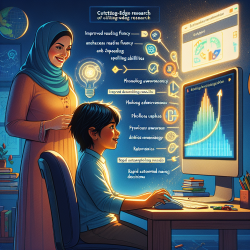Introduction
As a Special Education Director, you are constantly striving to improve the educational experiences of students with special needs. One way to achieve this is by staying informed about the latest research and trends. A recent study titled "A Spatial Panel Data Analysis of Economic Growth, Urbanization, and NOx Emissions in China" offers insights that can be applied to the field of special education, particularly in addressing challenges such as therapist staffing shortages and ensuring legal compliance.
Understanding the Research
The study explores the relationship between economic growth, urbanization, and nitrogen oxides (NOx) emissions in China. It utilizes a spatial panel data technique to analyze how these factors are interconnected and affect environmental quality. The research highlights the existence of an inverse N-shaped Environmental Kuznets Curve (EKC) for both income-NOx and urbanization-NOx nexuses, suggesting that economic growth and urbanization initially increase emissions but eventually lead to a decrease as economies mature.
Applying Research Insights to Special Education
While the study focuses on environmental issues, its findings can inspire strategies to address challenges in special education. Here are a few ways to apply these insights:
- Data-Driven Decision Making: Just as the study uses spatial panel data to uncover patterns, special education can benefit from data-driven approaches to identify trends in student needs and resource allocation.
- Adaptive Strategies: The inverse N-shaped EKC suggests that initial challenges can lead to positive outcomes. In special education, this means being open to adaptive strategies that evolve with changing student demographics and needs.
- Collaboration and Networking: The study emphasizes the importance of regional cooperation in addressing emissions. Similarly, collaboration among schools, districts, and online therapy providers like TinyEYE can help overcome therapist shortages and improve service delivery.
Encouraging Further Research
To truly harness the potential of research, it is crucial to encourage further studies that explore the intersection of economic, environmental, and educational factors. By understanding these complex relationships, practitioners can develop innovative solutions that enhance the educational experiences of students with special needs.
Conclusion
The insights from the study on economic growth, urbanization, and NOx emissions in China offer valuable lessons for special education practitioners. By embracing data-driven decision-making, adaptive strategies, and collaboration, we can transform challenges into opportunities and create a more inclusive and effective educational environment.
To read the original research paper, please follow this link: A Spatial Panel Data Analysis of Economic Growth, Urbanization, and NOx Emissions in China.










